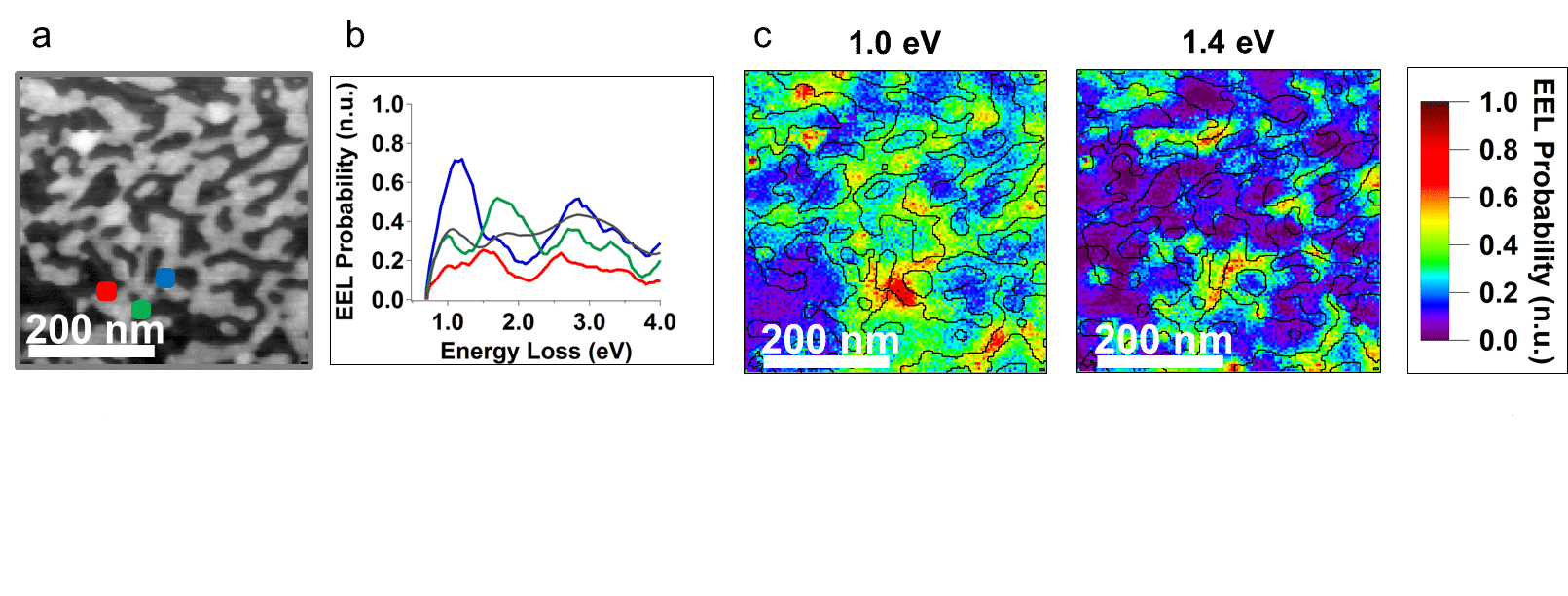
Evidence of random Surface Plasmon Modes in Fractal Metal Films
Surface Plasmon (SP) modes dictate the optical properties of metal nanoparticles. In simple nanoobjects, they depend on both the size and shape through simple trends. However, the situation becomes complex in disordered systems. Strong broadband absorption properties have been measured in percolating metal films [1], and are commonly attributed to a strong localization of light at the nanoscale [2]. This strong localization suggests an extraordinary character of the SP modes of percolating films [3]. However, despite the great deal of work in the past 15 years, a comprehensive experimental evidence of the unusual features of these SP modes was missing until recently, due to a lack of studies combining high spatial resolution, broad spectral range of excitation and simultaneous access to the local sample morphology. On the other hand, Electron Energy Loss Spectroscopy (EELS) in Scanning Transmission Electron Microscopes (STEM) has emerged as an essential tool to map the SP modes of simple nanoobjects with nanometer spatial resolution. We have recently performed STEM EELS measurements on different samples to investigate the SP modes of disordered metallic systems [4]. This work demonstrates that percolating metal films sustain numerous strongly confined random SP modes induced by the fractal geometry of the medium.

a. STEM image of a percolating silver film. b. Local (colored) and mean (gray) EELS spectra recorded in the area shown in a. The large spectral variations imply a complex set of SP modes. c. Spatial variations of the EELS signal at constant energies (1.0 and 1.4 eV). The numerous local intensity maxima are due to strongly confined random modes showing no obvious correlation with the substrate local geometry.
[1] P. Gadenne et al., J. Appl. Phys. 66, 3019 (1989)
[2] S. Grésillon et al., Phys. Rev. Lett. 82, 4520 (1999)
[3] M. I. Stockman et al., Phys. Rev. Lett. 87,167401 (2001)
[4] A. Losquin et al., Phys. Rev. B 88, 115427 (2013)
arthur.losquin@fysik.lth.se
Powered by Eventact EMS